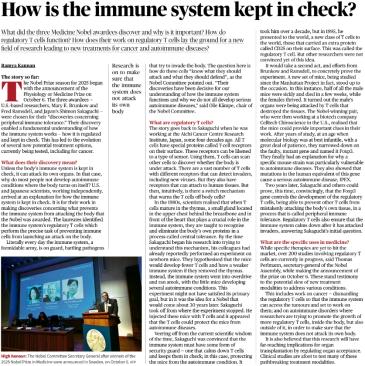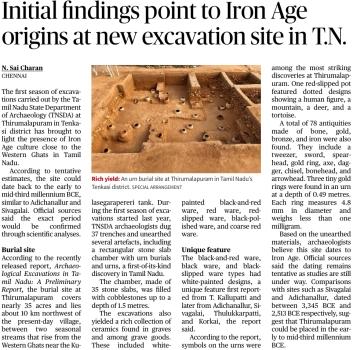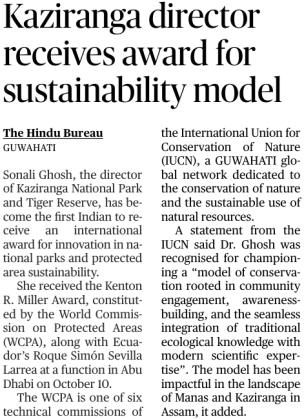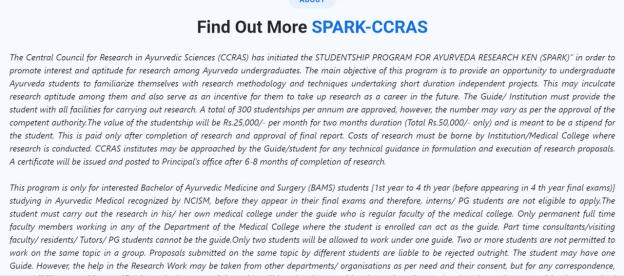Daily Current Affairs (CA) for UPSC 13th Oct 2025


| Index |
| S.No | Topic | Page No |
| Daily Hindu Analysis (YouTube) |
| 1. | Do cash transfers build women’s agency? |
|
| 2. | Natural farming gains traction in Himachal |
|
| 3. | What is Macroscopic Quantum Tunnelling? |
|
| 4. | How is the immune system kept in check? |
|
| 5. | Grow export-oriented crops, Modi tells farmers |
|
| 6. | Initial findings point to Iron Age origins at new excavation site in T.N. |
|
| 7. | Thalassemia patients flag shortage of leukocyte filter sets, iron chelation drugs |
|
| 8. | Kaziranga director receives award for sustainability model |
|
| Daily Current Affairs |
| 9. | SPARK–4.0 |
|
| 10. | Bharat Taxi Initiative |
|
| 11. | Green Sea Turtle |
|
| 12. | India–UK Connectivity and Innovation Centre (CIC) |
|
| 13. | Pradhan Mantri Dhan-Dhaanya Krishi Yojana (PMDDKY) |
|
Do cash transfers build women’s agency?

Syllabus Mapping:
- GS Paper II: Welfare schemes for vulnerable sections and issues arising from their implementation.
- GS Paper III: Inclusive growth, Financial inclusion, and Government policies for empowerment of women.
Context India’s welfare architecture has increasingly adopted cash transfers as a core strategy for poverty reduction and social empowerment.
Recent years have seen the feminisation of welfare, where women are made the direct recipients of government financial transfers — aimed at improving not just household welfare but also women’s economic autonomy. However, while such initiatives have led to financial inclusion, the question remains:
Do they genuinely enhance women’s control, decision-making power, and long-term empowerment? What is it All About The article explores whether schemes like Bihar’s Mukhyamantri Mahila Rojgar Yojana, Karnataka’s Gruha Lakshmi, West Bengal’s Lakshmir Bhandar, and Madhya Pradesh’s Ladli Behna Yojana — which provide direct cash support to women — have gone beyond mere financial inclusion to build economic agency. It analyses the gap between account ownership and account usage, and the structural barriers preventing women from fully leveraging financial instruments.
Detailed Analysis
1. The Feminisation of Welfare
- The politics of welfare in India is increasingly gendered, as cash transfer schemes directly target women to ensure welfare outcomes reach families more effectively.
- Example: Bihar’s Mahila Rojgar Yojana provides ₹10,000–₹75,000 as seed capital for women’s self-employment.
- This shift acknowledges women as key agents of development rather than passive beneficiaries.
2. The Financial Inclusion–Empowerment Gap - According to World Bank Global Findex 2025, 89% of Indian women now have bank accounts (global average: 77%).
- However, only 25% actively transact, 21% save, and 17% borrow — indicating access without autonomy.
- Over 56 crore women hold Jan Dhan accounts, but nearly 20% remain dormant due to socio-cultural and digital barriers.
3. Limitations in Building Agency - Access ≠ Control: Women may receive money but often lack decision-making power within households.
- Digital & Mobility Barriers: Limited digital literacy, fear of technology, and mobility restrictions curb active participation.
- Informality of Women’s Work: Women’s contributions remain invisible, reducing their leverage in formal economic systems.
- Lack of Asset Ownership: Without secure property or land rights, cash benefits rarely translate into lasting independence.
4. The Role of JAM Trinity - The Jan Dhan–Aadhaar–Mobile (JAM) architecture revolutionised welfare delivery by ensuring transparency and reducing leakages.
- But while it has improved access, it hasn’t yet translated into decision-making power.
- To bridge this, digital and financial literacy and community-based training (through SHGs or female banking agents) are essential.
5. Towards Genuine Empowerment For cash transfers to create true agency, the approach must: 1. Integrate DBTs with livelihoods — combine income support with training, credit access, and entrepreneurship.
2. Encourage asset creation — promote land, business, or property ownership.
3. Strengthen financial literacy — especially among rural women.
4. Build women’s networks — SHGs and community financial models for collective bargaining.
5. Promote digital inclusion — affordable smartphones and easy access to online banking for rural women.
Significance
- Cash transfers have enhanced women’s visibility in welfare policies.
- However, empowerment depends on whether women can control, grow, and sustain financial assets.
- Sustainable empowerment requires transforming financial inclusion into financial independence and agency.
Relevant Government Schemes & Initiatives | Scheme / Programme | Objective / Focus |
| Pradhan Mantri Jan Dhan Yojana (PMJDY) | Universal access to banking, especially for women; forms the base of JAM. |
| Pradhan Mantri Ujjwala Yojana (PMUY) | Provides LPG connections in women’s names — symbolic economic empowerment. |
| Deendayal Antyodaya Yojana – NRLM | Promotes Self-Help Groups (SHGs) and women’s micro-entrepreneurship. |
| Direct Benefit Transfer (DBT) Mission | Ensures targeted and transparent financial transfers. |
| Mahila e-Haat & Stand-Up India | Encourages women entrepreneurs and access to credit. |
| Digital Saksharta Abhiyan (DISHA) | Promotes digital literacy among rural citizens, including women. |
| Beti Bachao Beti Padhao | Addresses gender inequality and promotes women’s participation. |
UPSC MAINS Q.
“Cash transfer schemes in India have expanded financial inclusion for women but have not yet achieved genuine empowerment.” Discuss with reference to recent government initiatives and challenges.
Natural farming gains traction in Himachal
Syllabus Mapping:
- GS Paper III: Agriculture — E-Technology in aid of farmers, Sustainable and Organic Farming, Environmental Conservation.
- GS Paper II: Government Policies and Interventions for development in various sectors.
Context Farmers in Himachal Pradesh are steadily transitioning from chemical-based agriculture to natural and sustainable farming practices under the State’s flagship scheme — Prakritik Kheti Khushhal Kisan Yojana (PK3Y).
This shift is helping reduce the use of chemical fertilizers and pesticides while improving soil health, farmers’ income, and environmental sustainability. The model aligns with India’s national mission for sustainable agriculture and the global movement toward climate-resilient and eco-friendly food systems.
What is it All About
- Himachal Pradesh has launched PK3Y to promote chemical-free agriculture, enabling farmers to practice natural farming that relies on local resources such as cow dung, cow urine, and organic inputs instead of synthetic chemicals.
- Over 3 lakh farmers have been trained under the scheme, with around 2.2 lakh already practicing natural farming either fully or partially.
- The government has also introduced Minimum Support Prices (MSPs) for naturally grown crops such as:
- Maize – ₹40/kg
- Wheat – ₹60/kg
- Raw turmeric – ₹90/kg
This marks a significant policy step to incentivize sustainable farming and promote nutrient-rich produce.
Detailed Analysis
1. Natural Farming – Concept
- Natural farming is a chemical-free, eco-friendly agricultural approach that maintains soil fertility and ecological balance.
- It promotes self-reliant agriculture by reducing external input costs and improving soil micro-organisms, water retention, and biodiversity.
- It stands as a counter-model to the Green Revolution, which relied heavily on chemical fertilizers and pesticides.
2. Himachal’s Success Model: PK3Y - Launched in 2018, PK3Y aims to transform the state into a chemical-free farming hub.
- Farmers receive training and field support under the scheme.
- Certified under CARA (Certification Tool for Agriculture Resource Analysis) to ensure authenticity of natural produce.
- The scheme has led to improved soil fertility, higher yields, and better market prices.
- Farmers report lower dependence on external markets and chemical inputs, making agriculture more self-sustaining.
3. Key Benefits - Economic: Reduced input costs, MSP support, better price realization.
- Environmental: Improved soil fertility, biodiversity conservation, and reduced chemical pollution.
- Social: Empowerment of small and marginal farmers; enhanced food safety and community participation.
4. National and Global Relevance - Supports India’s commitments under the UN Sustainable Development Goals (SDGs 2, 12, 13, and 15).
- Contributes to climate-resilient agriculture by reducing greenhouse gas emissions from fertilizers.
- Acts as a model for replication in other hill and dryland states.
Related Schemes and Initiatives | Scheme / Mission | Key Features / Objectives |
| Prakritik Kheti Khushhal Kisan Yojana (PK3Y) – Himachal Pradesh | Promotes natural farming through training, certification, and MSP support for naturally grown crops. |
| Zero Budget Natural Farming (ZBNF) | Popularised by Subhash Palekar; based on the concept of farming without external inputs; uses Jeevamrit and Beejamrit. |
| Paramparagat Krishi Vikas Yojana (PKVY) | Central scheme promoting organic farming through cluster-based approaches and certification support. |
| Bharatiya Prakritik Krishi Paddhati (BPKP) | A sub-scheme under Paramparagat Krishi Vikas Yojana; focuses specifically on natural farming and low-cost inputs. |
| National Mission on Sustainable Agriculture (NMSA) | Promotes climate-resilient and resource-efficient farming practices. |
| National Project on Organic Farming (NPOF) | Encourages the use of bio-fertilizers and organic manure. |
| Mission Organic Value Chain Development for North Eastern Region (MOVCD-NER) | Supports organic farming and value chain creation in NE states. |
| Namami Gange – Natural Farming Corridor Initiative | Promotes organic and natural farming along the Ganga basin to reduce chemical runoff. |
5. Challenges - Market Linkages: Limited access to premium markets for natural produce.
- Certification Delays: High costs and lack of awareness about certification.
- Transition Period: Soil takes time to recover after years of chemical use.
- Knowledge Gaps: Need for extensive farmer training and handholding.
- Yield Concerns: Initially lower yields discourage some farmers from shifting.
UPSC Mains Q.
“Natural farming represents a sustainable alternative to input-intensive agriculture. Discuss the role of Himachal Pradesh’s Prakritik Kheti Khushhal Kisan Yojana in promoting this transformation and evaluate the challenges in scaling such models nationwide.”
What is Macroscopic Quantum Tunnelling? Syllabus Mapping - GS Paper III: Science & Technology — Developments in Modern Physics, Quantum Technology, and Applications.
Context The 2025 Nobel Prize in Physics was awarded to John Clarke, Michel Devoret, and John Martinis for demonstrating Macroscopic Quantum Tunnelling (MQT) in superconducting circuits.
Their discovery linked quantum mechanics with macroscopic electrical systems, laying the foundation for superconducting quantum processors — the backbone of modern quantum computing.
What is Macroscopic Quantum Tunnelling (MQT)?
- Quantum tunnelling: Particles cross an energy barrier even without sufficient energy — a key quantum phenomenon.
- The laureates showed that this effect also occurs in macroscopic systems, not just subatomic particles.
- Using a Josephson junction (two superconductors separated by a thin insulator), they proved that entire circuits can exhibit quantum behaviour like tunnelling and coherence.
Key Significance 1. Quantum-Classical Bridge: Demonstrated quantum laws at a visible, circuit level.
2. Precision Control: Enabled stable measurement of quantum states — vital for qubit design.
3. Technological Foundation: Led to development of superconducting qubits used by Google and IBM.
Applications
- Quantum Computing: Enables coherent qubit operations in superconducting processors.
- Quantum Metrology: Improved precision in quantum measurements and sensors like SQUIDs.
- Circuit QED: Created a platform for quantum simulation and communication using microwave circuits.
India Relevance - Under the National Quantum Mission (2023–2031), India is developing superconducting circuits and qubits (IISc, TIFR, IIT-Madras).
- Aims for quantum computing leadership and global collaboration with IBM and Google Quantum AI.
UPSC Prelims Q.
With reference to Macroscopic Quantum Tunnelling (MQT), consider the following statements: 1. It demonstrates that quantum tunnelling can occur in macroscopic systems like superconducting circuits.
2. The Josephson junction is a key component used to study MQT.
3. It has applications in developing superconducting quantum processors. Which of the statements given above are correct?
(a) 1 and 2 only
(b) 2 and 3 only
(c) 1 and 3 only
(d) 1, 2 and 3
Answer: (d) 1, 2 and 3
How is the immune system kept in check?

Syllabus Mapping
- GS Paper III:
- Science and Technology – Developments and their applications
- Biotechnology and its applications in health
- Awareness in fields of immunology and public health
Context The 2025 Nobel Prize in Physiology or Medicine was awarded to Mary E. Burmkov, Fred Ramsdell (U.S.), and Shimon Sakaguchi (Japan) for their pioneering work on “discoveries concerning peripheral immune tolerance.”
Their findings have transformed the understanding of how the immune system avoids attacking the body’s own cells — a mechanism critical for preventing autoimmune diseases and improving cancer immunotherapy.
What the Discovery Means
The immune system functions as the body’s defense mechanism against pathogens. However, if not properly regulated, it can mistakenly attack the body’s own cells — leading to autoimmune disorders such as Type 1 Diabetes, Multiple Sclerosis, or Rheumatoid Arthritis.
The scientists identified Regulatory T Cells (Tregs) — a subset of T cells that prevent immune overreaction by suppressing harmful immune responses. This discovery answers the long-standing question of why the body’s immune system doesn’t attack its own tissues, and how this tolerance can fail in disease.
Detailed Analysis
1. What are Regulatory T Cells (Tregs)?
- Tregs are a class of immune cells that regulate and suppress other immune cells to maintain tolerance to self-antigens.
- They act as a “brake” mechanism to prevent excessive immune activation.
- The discovery of CD25 protein receptors and FoxP3 gene mutation helped scientists identify how Tregs function.
- In experiments, when Tregs were removed from mice, the animals developed severe autoimmune disorders, confirming their vital role in immune regulation.
2. How Their Work Changed Medical Science - Their findings explain the mechanisms of autoimmunity, showing how the immune system distinguishes between “self” and “non-self.”
- This discovery led to novel therapies:
- Cancer Treatment: Regulating T cells to allow the immune system to attack cancer cells.
- Autoimmune Disorders: Boosting Tregs to calm immune responses in diseases like lupus and multiple sclerosis.
- Organ Transplantation: Preventing rejection by training immune tolerance.
3. Application in Modern Medicine - Over 200 clinical trials are currently exploring therapies based on regulatory T cells.
- The research has laid the foundation for next-generation immunotherapies — combining immune tolerance and targeted activation.
- It also underpins the growing field of precision immunology, which aims to balance immunity and tolerance in each patient.
Indian Context & Government Initiatives - India has increased its focus on biomedical research through programs under:
- Department of Biotechnology (DBT)
- Indian Council of Medical Research (ICMR) — focusing on autoimmune diseases and immunotherapy research.
- National Biopharma Mission (NBM) — supports translational research for novel biologics, including immunomodulators.
- The National Cancer Grid (NCG) also promotes immunotherapy-based cancer care.
- Under Ayushman Bharat Digital Mission, the integration of genetic and immunological data could facilitate personalized treatments in the future.
Q.
With reference to the 2025 Nobel Prize in Physiology or Medicine, consider the following statements: 1. The prize was awarded for discoveries related to regulatory T cells, which help keep the immune system from attacking the body’s own tissues.
2. The discovery has paved the way for research into treatments for autoimmune diseases and cancer.
3. The laureates’ work explained how the immune system can be enhanced to deliberately destroy its own organs during infections. Which of the statements given above are correct?
(a) 1 and 2 only
(b) 2 and 3 only
(c) 1 and 3 only
(d) 1, 2 and 3
Answer: (a) 1 and 2 only
Grow export-oriented crops, Modi tells farmers 
Syllabus Mapping
- GS Paper III: Indian Economy – Agriculture, Marketing of Agricultural Produce, E-Technology in Agriculture, Issues related to direct and indirect farm subsidies, Public Distribution System, and Food Security.
- GS Paper II: Government policies and interventions for development in various sectors.
Context Prime Minister Narendra Modi recently launched two key agricultural initiatives — 1. Dhan Dhaanya Krishi Yojana, and 2. Pulses Self-Reliance Mission, aimed at transforming India’s agriculture sector from self-sufficiency to export orientation.
While addressing farmers in New Delhi, PM Modi also highlighted how GST reforms have boosted farmers’ savings and made farming tools and machinery more affordable.
What is the Issue All About?
India has largely focused on achieving food security, primarily through staples like rice and wheat. However, the government is now encouraging farmers to move “beyond flour and rice” — to grow crops that cater to both domestic nutritional needs and global export markets.
This aligns with India’s broader goals of:
- Nutritional self-reliance,
- Import substitution (especially in pulses), and
- Boosting agricultural exports to support rural incomes.
Detailed Analysis Dhan Dhaanya Krishi Yojana - Aims to enhance agricultural productivity and promote diversification towards high-value crops such as pulses, oilseeds, millets, and horticultural produce.
- Encourages export-oriented cropping patterns, ensuring that farmers not only achieve self-sufficiency but also benefit from global agri-trade opportunities.
- Supports the creation of agri-infrastructure, value addition, and market linkages through digital platforms.
Pulses Self-Reliance Mission - India is the largest producer and consumer of pulses but also imports millions of tonnes annually to meet domestic demand.
- The mission aims to make India self-reliant in pulses by increasing cultivation by 35 lakh hectares and improving productivity.
- Valued at ₹11,000 crore, it focuses on ensuring adequate protein nutrition, especially for vegetarian diets and child development.
- Promotes crop diversification, soil health, and agro-ecological balance by reducing monocropping of rice and wheat.
Economic and Policy Context GST Reforms and Rural Benefits - PM Modi highlighted that GST reforms have doubled rural household savings by lowering costs on daily-use items and agricultural tools.
- For example, the tax on tractors has fallen from ₹70,000 to ₹40,000, making mechanisation more affordable.
- These savings enhance farmers’ purchasing power and indirectly boost agricultural productivity.
Export-Oriented Agriculture - Export diversification supports the Vision of Viksit Bharat @2047 by positioning India as a global agri-export hub.
- Encouraging pulses, oilseeds, and other protein-rich crops aligns with global demand trends, helping reduce trade deficits and increase foreign exchange earnings.
Nutritional Significance - India faces protein deficiency, particularly among vegetarians.
- Promoting pulses helps tackle malnutrition and supports the government’s Poshan Abhiyaan and Food & Nutrition Security Mission.
Wider Relevance - Doubling farmers’ income (NITI Aayog target).
- Reducing agricultural imports and enhancing self-sufficiency.
- Promoting sustainable farming and efficient use of land and water resources.
- Strengthening India’s position in global agri-value chains.
Government Initiatives Linked 1. PM-KISAN Scheme – Direct income support to farmers.
2. PM-AASHA Scheme – Ensuring MSP-based procurement for pulses and oilseeds.
3. National Food Security Mission (NFSM-Pulses) – For increasing pulse productivity.
4. e-NAM (National Agricultural Market) – Digital trading for farmers.
5. APEDA Initiatives – Export promotion for agri-products.
6. National Mission on Edible Oils–Oil Palm (NMEO-OP) – Parallel mission for oilseed self-reliance.
UPSC PRELIMS Q. Consider the following statements regarding the “Pulses Self-Reliance Mission”:
1. It aims to increase the area under pulse cultivation by 35 lakh hectares.
2. It is valued at over ₹11,000 crore.
3. It seeks to make India the largest exporter of pulses globally. Which of the statements given above is/are correct?
(a) 1 and 2 only
(b) 2 and 3 only
(c) 1 and 3 only
(d) 1, 2 and 3
Answer: (a) 1 and 2 only
Initial findings point to Iron Age origins at new excavation site in T.N.

Syllabus Mapping
- GS Paper I: Indian Culture — Salient aspects of Art Forms, Literature, and Architecture from ancient to modern times.
Context The Tamil Nadu State Department of Archaeology (TNSDA) has discovered evidence of Iron Age culture at Thirumalapuram in Tenkasi district, near the Western Ghats.
This marks a major addition to Tamil Nadu’s prehistoric sites, similar to Adichanallur and Sivagalai.
Key Findings
- The site covers 35 acres and revealed a rectangular stone burial chamber with urns and artefacts.
- Excavations found 78 antiquities — weapons (sword, axe, spearhead), ornaments (gold rings), tools (tweezer, chisel), and painted pottery.
- A unique red-slipped pot depicted designs of a human, deer, tortoise, and mountain.
- Pottery types: black-and-red ware, red ware, and polished ware.
- The site likely dates to early–mid third millennium BCE, i.e., the Iron Age.
Significance - Shows advanced metal use and burial rituals in ancient Tamil society.
- Links Western Ghats region to Tamil Nadu’s Iron Age–Megalithic culture continuum.
- Strengthens evidence of indigenous cultural evolution in South India.
UPSC Prelims Q. With reference to the Thirumalapuram excavation, which of the following statements is correct?
(a) It is located in Tenkasi district near the Western Ghats.
(b) Only pottery items were found.
(c) It dates to the early medieval period.
(d) It is located on the east coast of Tamil Nadu.
Answer: (a)
Thalassemia patients flag shortage of leukocyte filter sets, iron chelation drugs

Syllabus Mapping - GS Paper II: Issues relating to Health, Government Policies and Interventions, Welfare of Vulnerable Sections.
- GS Paper III: Biotechnology and Applications in Health.
Context Thalassemia patients in Kerala have raised concerns over the shortage of leukocyte filter sets and iron chelation drugs, which are critical for their treatment.
The shortage has led to reduced blood transfusions and a fall in haemoglobin levels, posing serious health risks.
What is Thalassemia?
- Thalassemia is an inherited blood disorder caused by the body’s inability to produce enough haemoglobin, the protein in red blood cells that carries oxygen.
- The disease results in anemia, requiring regular blood transfusions to maintain normal haemoglobin levels.
Treatment and the Current Issue 1. Leukocyte Filter Sets: o Used during blood transfusions to remove white blood cells and prevent adverse immune reactions. o Their shortage has made patients hesitant to take transfusions.
2. Iron Chelation Therapy: o Frequent transfusions cause iron overload in the body, which can damage vital organs (heart, liver). o Iron chelation drugs (e.g., Deferasirox, Deferiprone) remove excess iron. o The non-availability for over a year has worsened patients’ conditions. 3. Government Response: o The Kerala government has directed hospitals to procure supplies locally and issued tenders for immediate replenishment. o Financial delays are cited as the main reason for the shortage. Significance
- Highlights the public health management challenges for chronic disorders.
- Points to the need for continuous supply-chain monitoring in essential medicines.
- Underlines the importance of affordable healthcare and policy intervention for rare and lifelong diseases.
UPSC Prelims Q.
With reference to Thalassemia, consider the following statements: 1. It is an inherited blood disorder caused by reduced or absent synthesis of haemoglobin. 2. Regular blood transfusion and iron chelation therapy are part of its management. 3. Leukocyte filters are used to increase red blood cell count in patients. Which of the statements given above are correct?
(a) 1 and 2 only
(b) 2 and 3 only
(c) 1 and 3 only
(d) 1, 2 and 3 Answer: (a) 1 and 2 only
Kaziranga director receives award for sustainability model

Syllabus Mapping
- GS Paper III: Environment — Conservation, Biodiversity, and Sustainable Development.
- GS Paper II: Government policies and interventions in environmental conservation.
Context Sonali Ghosh, Director of Kaziranga National Park and Tiger Reserve (Assam), became the first Indian to receive the Kenton R. Miller Award for innovation in national parks and protected area sustainability. The award was presented by the World Commission on Protected Areas (WCPA) under the International Union for Conservation of Nature (IUCN) at a function in Abu Dhabi.
About the Award
- Kenton R. Miller Award is an international recognition for excellence in protected area management and innovation.
- Dr. Ghosh was honoured for promoting a community-based conservation model integrating traditional ecological knowledge with modern scientific approaches.
- Her work has been impactful in Kaziranga and Manas landscapes in Assam.
About Kaziranga National Park - Located in Assam, it is a UNESCO World Heritage Site (1985).
- Famous for the Great Indian One-Horned Rhinoceros — hosts about two-thirds of the world’s population.
- Declared a Tiger Reserve in 2006.
- Lies on the banks of the Brahmaputra River.
- Recognised for its high species diversity, including elephants, wild water buffalo, and swamp deer.
- Faces challenges such as flooding, poaching, and human–wildlife conflict, making sustainable management vital.
Significance - Marks India’s growing global leadership in community-led and sustainable conservation.
- Promotes eco-friendly management balancing biodiversity protection and local livelihoods.
UPSC Prelims Q.
Consider the following statements regarding Kaziranga National Park: 1. It is located on the banks of the Ganga River. 2. It is a UNESCO World Heritage Site known for the one-horned rhinoceros. 3. It has been declared a Tiger Reserve. Which of the statements given above are correct?
(a) 1 and 2 only
(b) 2 and 3 only
(c) 1 and 3 only
(d) 1, 2 and 3
Answer: (b) 2 and 3 only
SPARK–4.0 
Syllabus: GS Paper 2 – Government Policies and Interventions (Health & AYUSH Sector)
Context: The Central Council for Research in Ayurvedic Sciences (CCRAS) under the Ministry of Ayush has launched SPARK–4.0 (2025–26) to promote research culture among
BAMS undergraduates. Key Points:
- What it is:
SPARK–4.0 (Studentship Program for Ayurveda Research Ken) is the fourth edition of CCRAS’s flagship programme designed to encourage research orientation among Ayurveda students.
- Organisation Involved:
Implemented by the Central Council for Research in Ayurvedic Sciences (CCRAS) under the Ministry of Ayush, Government of India.
- Aim:
To cultivate scientific curiosity and develop a research mindset in young Ayurveda scholars, bridging traditional knowledge with modern science.
- Key Features:
- 300 BAMS students to receive ₹50,000 studentships (₹25,000 per month for two months).
- Open to students from NCISM-recognized colleges across India.
- Includes faculty-guided, short-term independent research projects.
- Certificates awarded upon successful completion.
- Significance:
- Strengthens the research ecosystem in the Ayush sector.
- Builds a pipeline of skilled researchers for integrating Ayurveda with modern public health and innovation.
Source: DD News
Bharat Taxi Initiative Syllabus: GS Paper 2 – Governance (E-Governance and Digital Initiatives)
Context: The
National e-Governance Division (NeGD) under the
Ministry of Electronics & Information Technology (MeitY) has partnered with
Sahakar Taxi Cooperative Limited to support the upcoming
Bharat Taxi initiative, a cooperative-based national ride-hailing platform promoting citizen-centric digital services.
Key Points: - Nature of Initiative: A first-of-its-kind cooperative-driven, citizen-first national ride-hailing platform.
- Promoting Institutions: Jointly promoted by NCDC, IFFCO, AMUL, KRIBHCO, NAFED, NABARD, NDDB, and NCEL.
- Objective: To combine the cooperative movement’s principles with the Digital India vision for inclusive and technology-enabled public service delivery.
- Role of NeGD:
- Platform Integration & Technical Architecture: Integrating Bharat Taxi with national platforms like DigiLocker, UMANG, and API Setu for smooth identity verification and service access.
- Security, Compliance & Infrastructure: Ensuring adherence to data protection norms and cybersecurity standards of the Government of India.
- Programme Advisory: Providing governance and programme management support using NeGD’s expertise in national-level digital platforms.
- UI/UX & Accessibility: Advising on user-friendly design, multilingual interface, and inclusive access features for all citizens.
- Significance: The initiative reinforces digital empowerment, cooperative entrepreneurship, and citizen-focused innovation in India’s transport sector.
Source: PIB
Green Sea Turtle Syllabus: GS Paper 3 – Environment & Biodiversity (Species Conservation and Ecology)
Context: According to the
International Union for Conservation of Nature (IUCN), the
Red List status of the Green Sea Turtle (Chelonia mydas) has improved from
Endangered to Least Concern due to
sustained global conservation efforts.
Key Points: - Scientific Name: Chelonia mydas
- Largest Hard-Shelled Turtle: The Green Sea Turtle is the largest among hard-shelled sea turtles.
- Origin of Name: The name “Green” refers to the green-colored fat beneath its carapace, not the shell, which is olive to black in color.
- Diet:
- Juveniles are carnivorous, feeding on small invertebrates.
- Adults become omnivorous, consuming seagrasses and algae.
- Ecological Role: Serves as a keystone species in tropical marine ecosystems by maintaining healthy seagrass beds and coral reefs.
- Distribution: Found in tropical and subtropical waters worldwide, including Indian, Pacific, and Atlantic Oceans.
- Distinct Features:
- Small head with beak-like jaws suited to their diet.
- No visible ears, but can detect low-frequency sounds.
- Excellent sense of smell aiding in foraging and navigation.
- Spend most of their lives underwater, coming to shore only for nesting.
- Lifespan: Estimated between 60–70 years.
- Conservation Status:
- IUCN Red List: Least Concern (recently upgraded from Endangered).
Source: Down To Earth (DTE)
India–UK Connectivity and Innovation Centre (CIC) Syllabus: GS Paper 2 – International Relations (Bilateral Cooperation in Science & Technology)
Context: India and the
United Kingdom jointly launched the
India–UK Connectivity and Innovation Centre (CIC) to boost collaboration in
digital technologies, 6G research, and secure communications, with a total investment of
₹282 crore (million) over four years.
Key Points: - What it is:
The India–UK CIC is a bilateral research and innovation platform focused on developing next-generation telecom technologies through joint academic, industrial, and governmental partnerships.
- Participating Nations & Agencies:
- India: Department of Telecommunications (DoT), Ministry of Communications
- UK: Department of Science, Innovation and Technology (DSIT)
- Supported by: UK Research and Innovation (UKRI) under the UK–India Technology Security Initiative
- Aim:
To drive innovation in secure, inclusive, and resilient digital communications, advancing global leadership in 6G and AI-enabled telecom systems aligned with the India–UK 2035 Vision.
- Funding:
Equal investment of ₹282 crore by both nations over four years.
- Focus Areas:
- AI in Telecom: For intelligent service delivery and network optimization.
- Non-Terrestrial Networks (NTNs): Satellite and airborne systems for rural connectivity.
- Telecom Cybersecurity: Building secure, open, and interoperable infrastructure.
- Collaborative Research: Linking universities, labs, and industries for innovation.
- Joint Testbeds: For testing and deploying new digital technologies.
- Standards Development: Promoting global interoperability through international standard-setting participation.
- Significance:
- Strengthens India–UK digital partnership and innovation corridor.
- Accelerates 6G readiness and contributes to global telecom standards.
- Promotes digital inclusion, extending connectivity to remote and rural regions.
Source: Deccan Herald (DH)
Pradhan Mantri Dhan-Dhaanya Krishi Yojana (PMDDKY)
Syllabus: GS Paper 3 – Agriculture: Government Schemes and Policies for Farm Sector Development
Context: The Prime Minister of India launched the Pradhan Mantri Dhan-Dhaanya Krishi Yojana (PMDDKY) — a landmark agricultural reform programme aimed at transforming farming practices in 100 low-performing districts across the country.
Key Points:
- What it is:
PMDDKY is a comprehensive agricultural transformation mission launched by the Ministry of Agriculture and Farmers’ Welfare to modernize Indian farming through technology, credit, irrigation, and market reforms.
- Aim:
- To increase crop productivity by 20–30% and reduce post-harvest losses below 5%.
- To double farmers’ income by 2030 through modern and climate-resilient farming.
- To promote equitable growth, focusing on women, youth, and small farmers.
- Eligibility Criteria:
- Targets 100 underperforming districts identified by NITI Aayog with low productivity and poor credit access.
- Prioritizes women farmers, youth agripreneurs, and FPOs.
- Key Features:
- Budget: ₹1.44 lakh crore over six years (2025–31).
- Convergence of 36 schemes under one digital platform for unified implementation.
- Smart Agriculture: Adoption of IoT sensors, drones, AI-based dashboards, and precision tools.
- Digital Dashboard: Tracks 117 Key Performance Indicators (KPIs) for yield, storage, and irrigation.
- Infrastructure Development: Focus on irrigation, cold chains, warehouses, processing units, and markets.
- Women Empowerment: Establishment of 10,000 Women Producer Groups, benefitting 5 lakh women farmers.
- Training: Skill-building through KVKs and global exposure in Israel, Japan, and the Netherlands.
- Green Farming: Promotes organic and climate-smart practices.
- Benefits:
- Productivity Rise: 20–30% improvement through high-yield seeds and efficient irrigation.
- Income Boost: 20–40% increase via diversified cropping and e-NAM market access.
- Employment Generation: 10–15 new rural jobs per village in allied sectors.
- Reduced Wastage: Cold storages and warehouses to lower losses by 20%.
- Financial Inclusion: Easy loans of ₹50,000–₹10 lakh via KCC and NABARD support.
Source: News on Air









